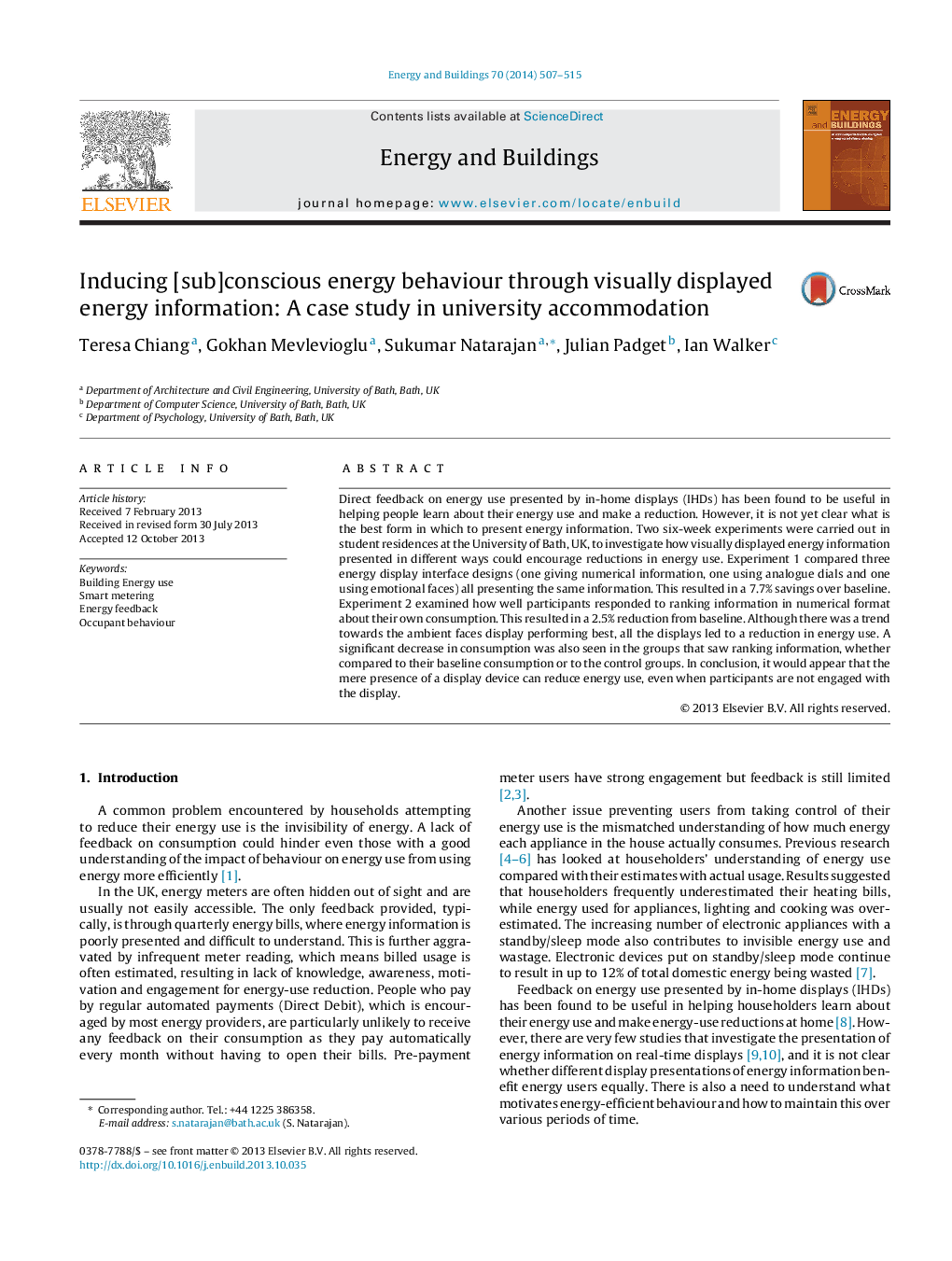| کد مقاله | کد نشریه | سال انتشار | مقاله انگلیسی | نسخه تمام متن |
|---|---|---|---|---|
| 263091 | 504063 | 2014 | 9 صفحه PDF | دانلود رایگان |
• We report two experiments on display design for energy use feedback.
• All designs produced savings though no significant differences were found between them at the 0.95 level.
• Ambient (smiley face) design may have an advantage but needs further investigation.
• Peer-ranking information could play an important role in these reductions.
Direct feedback on energy use presented by in-home displays (IHDs) has been found to be useful in helping people learn about their energy use and make a reduction. However, it is not yet clear what is the best form in which to present energy information. Two six-week experiments were carried out in student residences at the University of Bath, UK, to investigate how visually displayed energy information presented in different ways could encourage reductions in energy use. Experiment 1 compared three energy display interface designs (one giving numerical information, one using analogue dials and one using emotional faces) all presenting the same information. This resulted in a 7.7% savings over baseline. Experiment 2 examined how well participants responded to ranking information in numerical format about their own consumption. This resulted in a 2.5% reduction from baseline. Although there was a trend towards the ambient faces display performing best, all the displays led to a reduction in energy use. A significant decrease in consumption was also seen in the groups that saw ranking information, whether compared to their baseline consumption or to the control groups. In conclusion, it would appear that the mere presence of a display device can reduce energy use, even when participants are not engaged with the display.
Journal: Energy and Buildings - Volume 70, February 2014, Pages 507–515
